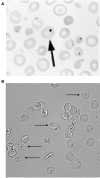Post-splenectomy sepsis: preventative strategies, challenges, and solutions
- PMID: 31571940
- PMCID: PMC6748314
- DOI: 10.2147/IDR.S179902
Post-splenectomy sepsis: preventative strategies, challenges, and solutions
Abstract
Removal of the spleen had already been established as a routine technique to treat splenic trauma and other diseases affecting the spleen before the anatomy, physiology, and function of the spleen were known in the mid-twentieth century. It is now widely accepted that the splenectomized individual is at increased risk for infection, in particular, overwhelming post-splenectomy infection (OPSI). OPSI is a syndrome of fulminant sepsis occurring in splenectomized (asplenic) or hyposplenic individuals that is associated with high mortality and morbidity. Poorly opsonized bacteria such as encapsulated bacteria, in particular, Streptococcus pneumoniae, are often implicated in sepsis. The spleen is a reticuloendothelial organ that facilitates opsonization and phagocytosis of pathogens, in addition to cellular maintenance. Splenectomy is associated with an impairment in immunoglobulin production, antibody-mediated clearance, and phagocytosis, leading to an increased risk of infection and sepsis. Early identification of the at-risk patient, early blood cultures prior to antibiotic administration, urgent blood smears and fast pathogen-detection tests, and sepsis bundles should be utilized in these patients. Prompt management and aggressive treatment can alter the course of disease in the at-risk splenectomized patient. Overwhelming post-splenectomy infection can be prevented through vaccination, chemoprophylaxis, and patient education. This article evaluates post-splenectomy sepsis by summarizing the anatomy and function of the spleen, physiological changes after splenectomy that predispose the splenectomized patient to infection, and current management and prevention strategies.
Keywords: OPSI; asplenism; sepsis; splenectomy.
© 2019 Luu et al.
Conflict of interest statement
Dr Sarah Luu reports grants from The Royal College of Pathologists of Australasia, outside the submitted work. The authors report no other conflicts of interest in this work.
Figures


References
-
- McClusky DA, Skandalakis LJ, Colborn GL, Skandalakis JE. Tribute to a triad: history of splenic anatomy, physiology, and surgery—part 1. World J Surg. 1999;23(3):311–325. - PubMed
-
- McClusky DA, Skandalakis LJ, Colborn GL, Skandalakis JE. Tribute to a triad: history of splenic anatomy, physiology and surgery – part 2. World J Surg. 1999;23(5):514–526. - PubMed
Publication types
LinkOut - more resources
Full Text Sources

